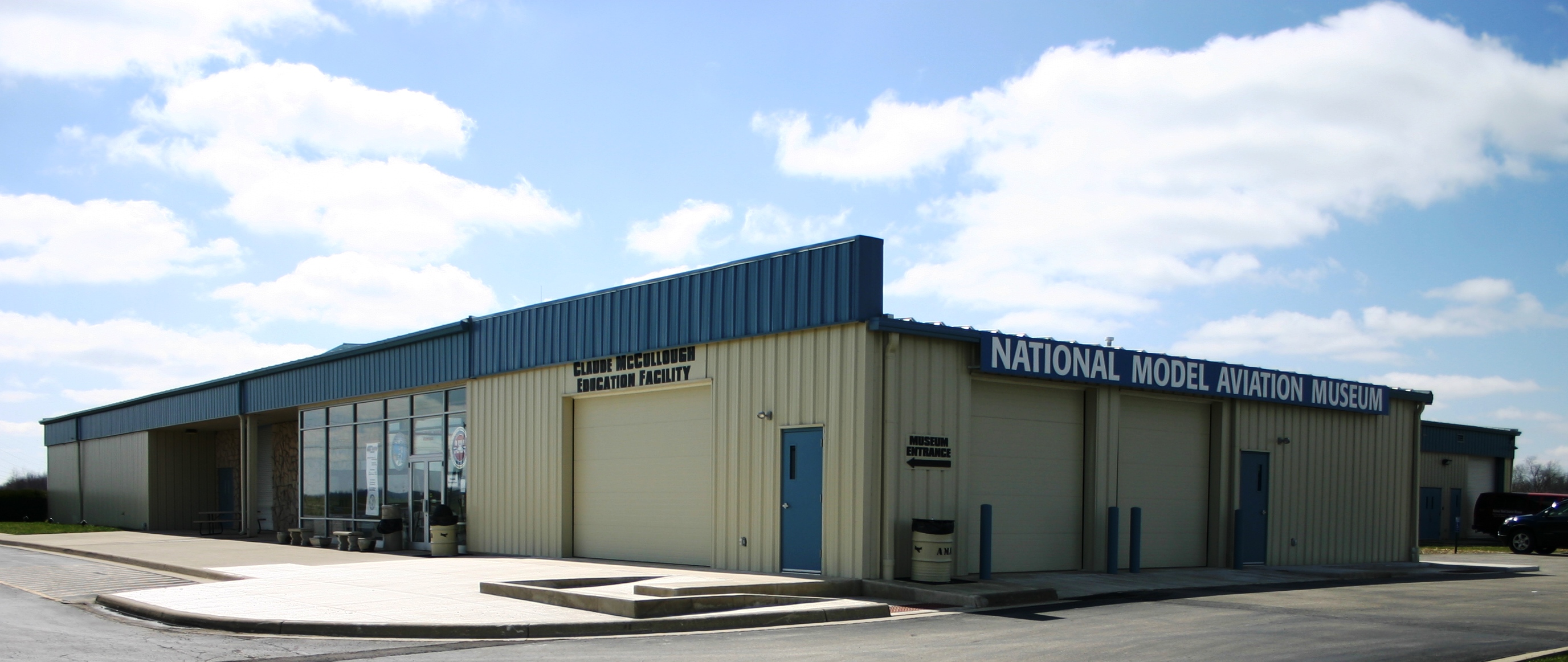Week 4 – May 26, 2011 -Frank Zaic
Frank Zaic, born August 1, 1912, lived to the age of 93. A modeler at an early age, Frank was instrumental in helping to develop the AMA into what it is today. His is well known for his Yearbooks, running from 1934 to 1938, and the 1950s through the 1960s. He also wrote other books, such as Circular Airflow and Design (1964), Frankly Speaking (1991), and the re-published articles of the American Boy magazine in his book Model Airplanes and the American Boy. (1982)
Around his neighborhood, he formed the Aeronuts model club in New York City. He was very busy in the 1930s. As he hit his 20s, he started the company JASCO with his brother, John, and sister, Christine in 1933. In 1934, 1935 and 1937, he was a Wakefield team member and participated in the Nats. He was one of the founders of the AMA, served on the executive committee, and worked with Lt. Harold Alden on the Model Aviation publication.
He is known for designing airplanes and publishing them in Air Trails, Model Craftsman and Popular Science magazines. He also did scientific model aviation research and writing, publishing the NFFS Symposium Reports and for various books and articles.
For all of his work representing and honoring model aviation with his research, writing and work, he received numerous awards. These included AMA Fellow and AMA Pioneer award, and has been inducted into various Halls of Fames: Model Aviation, National Free Flight Society, Society of Antique Modelers, and Kits and Plans Antiquious.
For more of the story of Frank Zaic, see his AMA History Program biography at https://www.modelaircraft.org/files/ZaicFrank.pdf. You can see all of the History program’s biographies, club and company histories, and more at https://www.modelaircraft.org/museum/whatshere/history.aspx.
1. 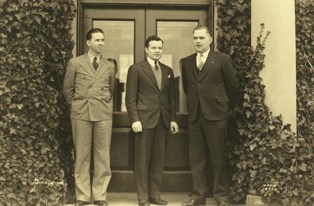 2.
2.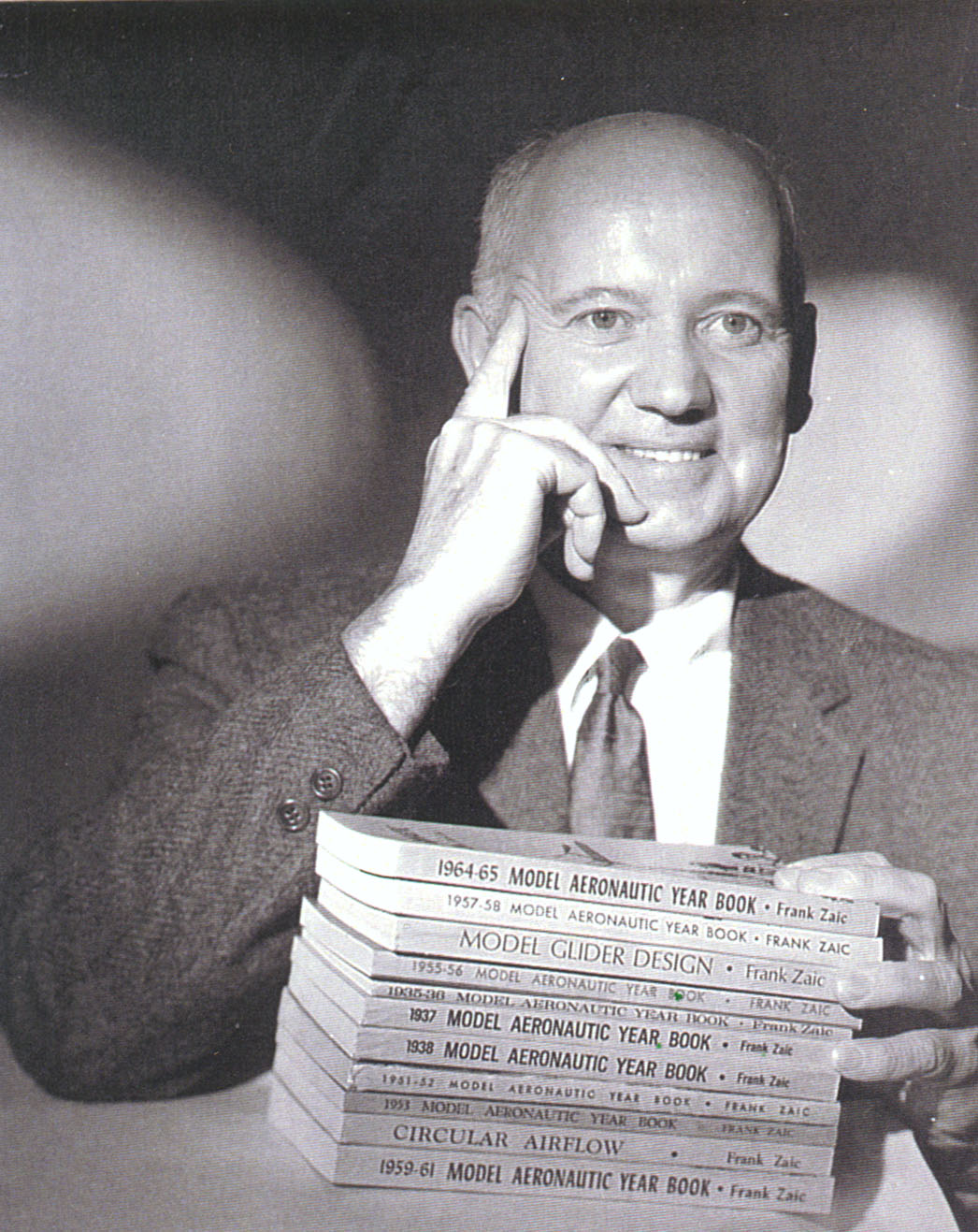 3.
3. 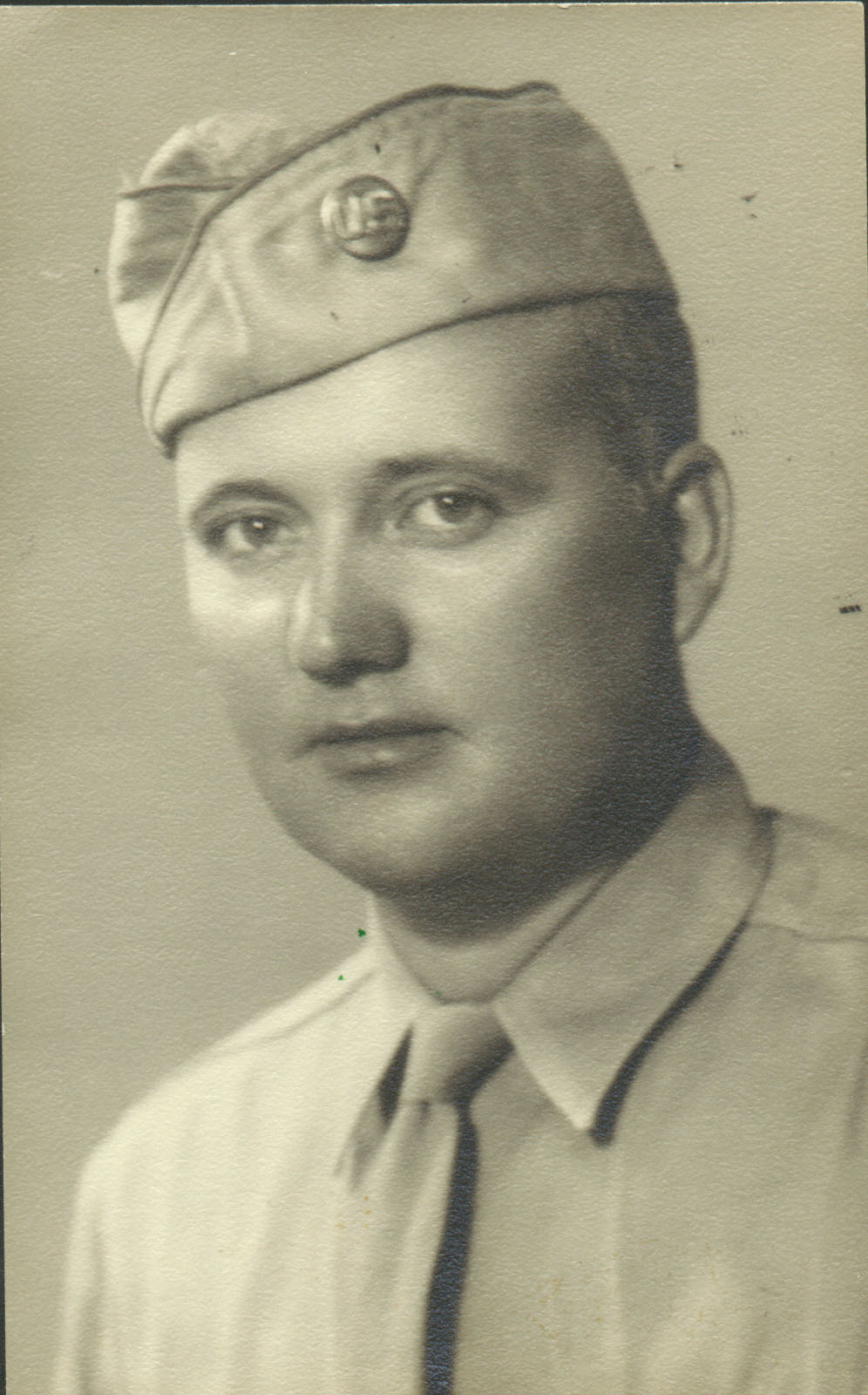
1. Tom Hulcher, Edward Sharp, and Frank Zaic (center) in front of NACA admin building, unknown date (Source #0018 History Program coll, NMAM Archives)
2. Frank Zaic with his Yearbooks, unknown date (Source #0018 History Program coll, NMAM Archives)
3. Frank Zaic in U.S. service uniform,1945 (Source #0018 History Program coll, NMAM Archives)
Week 3 – May 19, 2011 – Bill Brown Jr. Engine
When model airplanes first become popular in the early 1900s, the only available power source was a rubber motor. Gasoline motors weren’t seen as something that could be built small enough. Bill L. Brown IV dreamed of having an engine small enough to fit in a model, and set forth to create one.
Brown’s father was a mechanical engineer, and Bill was lucky to have a top-quality machine shop in his home. He began “monkeying around,” working on fabricating different parts for his idea of what a model engine would be. Finally, in 1930, when he was 19, he built an engine that operated. This engine had a displacement of .278 cu. in. and used a poppet valve in the crankcase to admit the fuel mixture.
Demand for gas engines rose after an article ran in the Philadelphia Evening Bulletin that told Bill’s story in 1931, and especially after Bill’s friend Maxwell Basset won first place during the 1933 Nats in all three powered contests: stick model Mulvihill, Cabin model Stout, and the Moffeft International Trophy. Together with his father, Bill designed an engine for production, called the Brown Model A. They partnered with Walter Hurlman, who ran a Tool and Die and Experimental machine shop and made about 50 more Brown Model A’s.
Later, Bill’s father partnered with another man to create the Junior Motors Corporation, which went on to produce several different models of the Brown, Jr. engine. Bill became a machinist for the company until he got into a disagreement with management and was fired.
1. 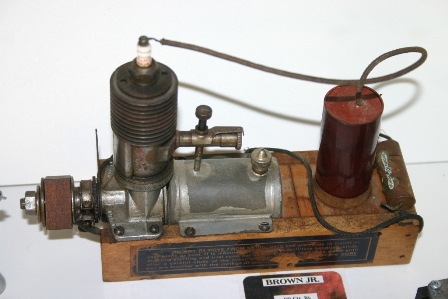
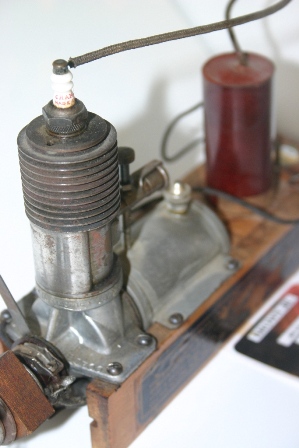
1, 2 & 3 – Three different views of a 1934 Brown Jr. Motor, Model B, serial number 1700, still on its original skids. (Source: National Model Aviation Museum Collection, donated by William Knepp, 1983.03.01.)
3. 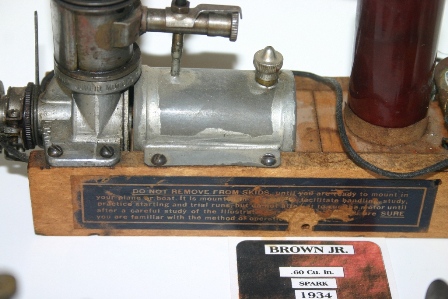 4.
4. 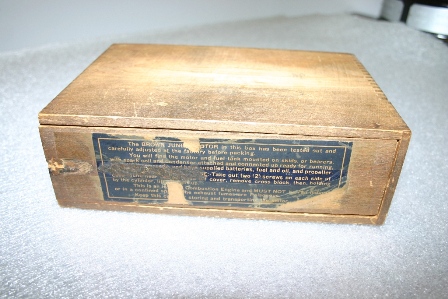
5. 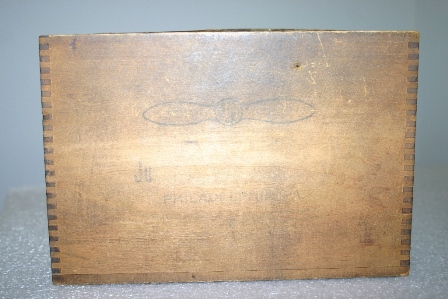 6.
6. 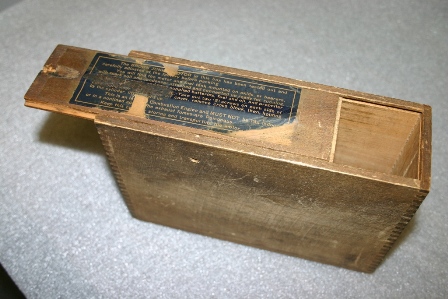
4, 5 & 6 – In the 1930s, Brown Jr. Motors were packaged on mounting skids in a wooden box with a sliding lid. (Source: National Model Aviation Museum Collection, donated by William Knepp, 1983.03.01.)
7. ![The cover of the instruction manual that came with the Brown Jr. Motor, Model B when purchased in 1934. (Source: National Model Aviation Museum Collection, donated by William Knepp, 1983.03.01 [“Instructions Governing the Care and Operation of the Brown Jr. Motor,” Brown Jr. Motors, 1934.])](https://www.modelaircraft.org/sites/default/files/images/brownb7.jpg) 8.
8. ![The opening pages of the instruction manual that came with the Brown Jr. Motor, Model B when purchased in 1934. (Source: National Model Aviation Museum Collection, donated by William Knepp, 1983.03.01 [“Instructions Governing the Care and Operation of the Brown Jr. Motor,” Brown Jr. Motors, 1934.])](https://www.modelaircraft.org/sites/default/files/images/brownb8.jpg)
9. ![The instruction manual of a Brown engine stressed safety. Keep these points in mind and you will have no cause to call the Firemen or Doctor.” (Source: National Model Aviation Museum Collection, donated by William Knepp, 1983.03.01 [“Instructions Governing the Care and Operation of the Brown Jr. Motor,” Brown Jr. Motors, 1934.])](https://www.modelaircraft.org/sites/default/files/images/brownb9.jpg)
7, 8, & 9 – The cover and first few pages of the instruction manual that came with the Brown Jr. Motor, Model B when purchased in 1934. Safety was just as important then as it is now, and the final sentence sums it up well, “Keep these points in mind and you will have no cause to call the Firemen or Doctor.” (Source: National Model Aviation Museum Collection, donated by William Knepp, 1983.03.01 [“Instructions Governing the Care and Operation of the Brown Jr. Motor,” Brown Jr. Motors, 1934.])
Week 2 – May 12, 2011 – AMA Headquarters Locations Timeline
1936:Copies of the first Model Aviation publication were produced from Lt. H.W. Alden’s loft apartment on 10th street in New York. Also documented in the magazine in that year was a location of 1732/1733 RCA building in Rockefeller Center in New York City.
1937 -February 1940: DuPont Circle, 1909 Massachusetts Avenue, N.W. in Washington, D.C.
March 1940 – December 1941:Advertisement of the AMA Headquarters offices in the Willard Hotel, 14th Street and Pennsylvania Avenue, N.W., in downtown Washington, D.C. Numbers denote nearby “principal points of interest.” The AMA stayed at this location for little more than a year. (Reprint from Model Aviation magazine, April 1940)
January 1942 – June 1942: 718 Jackson Place N.W. in Washington, D.C. The building, torn down in the 1960s and replaced with townhouses, overlooked the White House and Lafayette Park.
July 1942 – June 1965: Stoneleigh Court, 1025 Connecticut Avenue N.W. in Washington, D.C.
July 1965 – June 1970: 1239 Vermont Avenue N.W. in Washington, D.C.
July 1970 – February 1983: The AMA headquarters began at 806 Fifteenth Street N.W. in June of 1970, and then moved down the street to 815 Fifteenth Street N.W. in June of 1976.
March 1983 (official grand opening in September 1983) – 1993: The AMA moved to 1810 Samuel Morse Drive in Reston, Virginia in 1983, and was named the National Center for Aeromodeling. The Grand Opening was held on September 24, 1983.
1992 – 2001: In 1992, the Executive Council decided to move the headquarters to Muncie, Indiana, on 1000 acres of land, called the International Aeromodeling Center (IAC), and a 25,000 sq ft building named the Frank V. Ehling Complex after Mr. Ehling’s service to the AMA. The headquarters building’s new address was 5151 E. Memorial Drive. The Grand Opening of the IAC was on June 13-14, 1992. The Grand Opening of the building was held in 1994.
2001 – Today: In March of 2001, the new building for the AMA headquarters opened across the road from old building (now the Museum) at 5161 E. Memorial Drive in Muncie, Indiana. Many departments were moved into the new building. Currently, the Museum building holds its staff, the gallery, AMA Plans Service, Supply and Service, and Custom Products departments. The McCullough Education Facility addition was built on the side of the Museum building in 2009.
1. 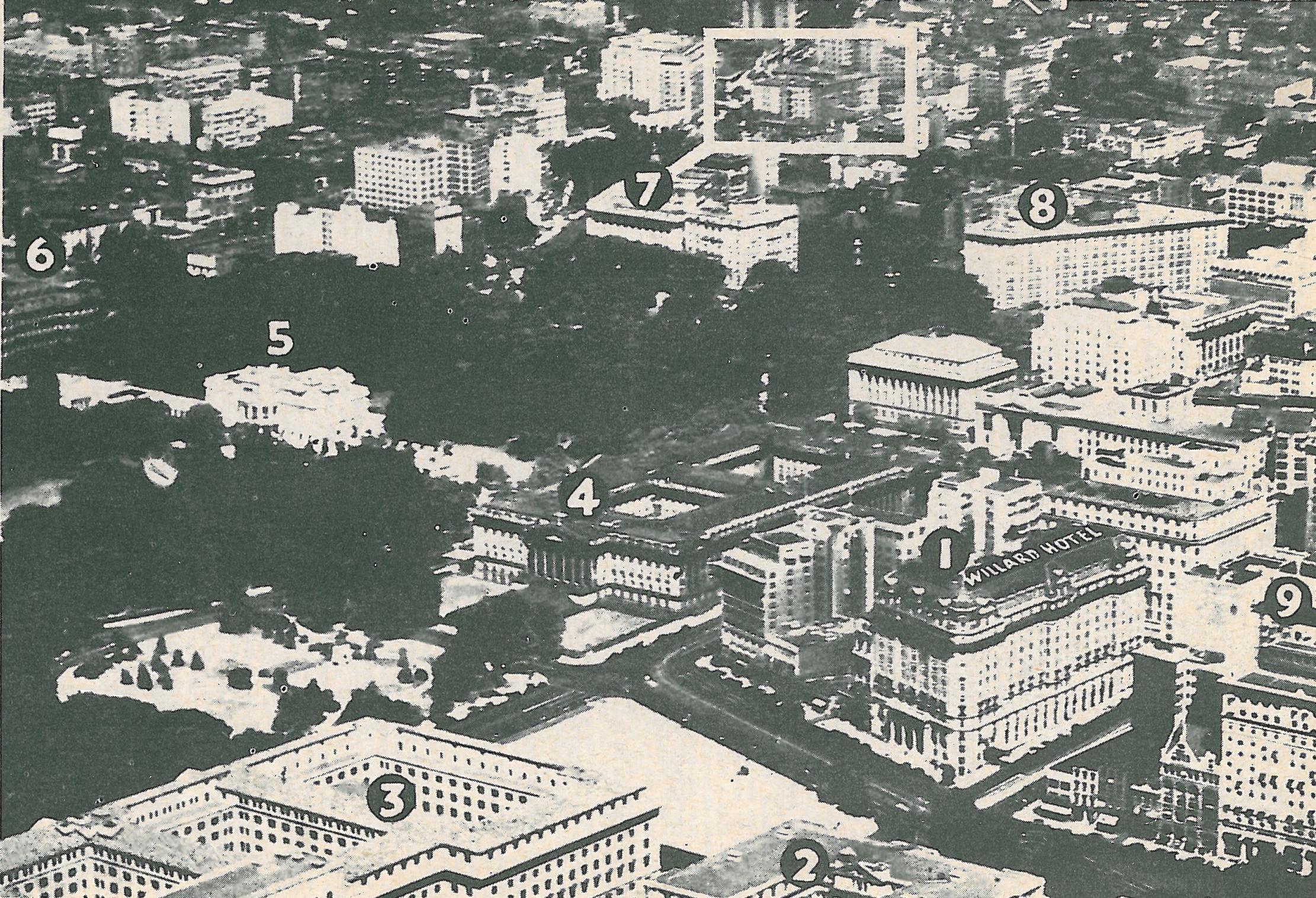
1.AMA Headquarters locations and other highlights marked on Washington, D.C. map, from Model Aviation, August 1946: “Look us up when you’re next in Washington: 1) Willard Hotel, pre-war AMA hqtrs; 2) District Bldg; 3) Commerce Dept; 4) Treasury Dept; 5) White House; 6) State Dept; 7) Stoneleigh Court, AMA Headquarters, 1025 Connecticut Ave., N.W.; 8) Veterans Adm; 9) National Press Building. Think you can find us, chum?” (Source: Lee Renaud Memorial Library collection)
2. 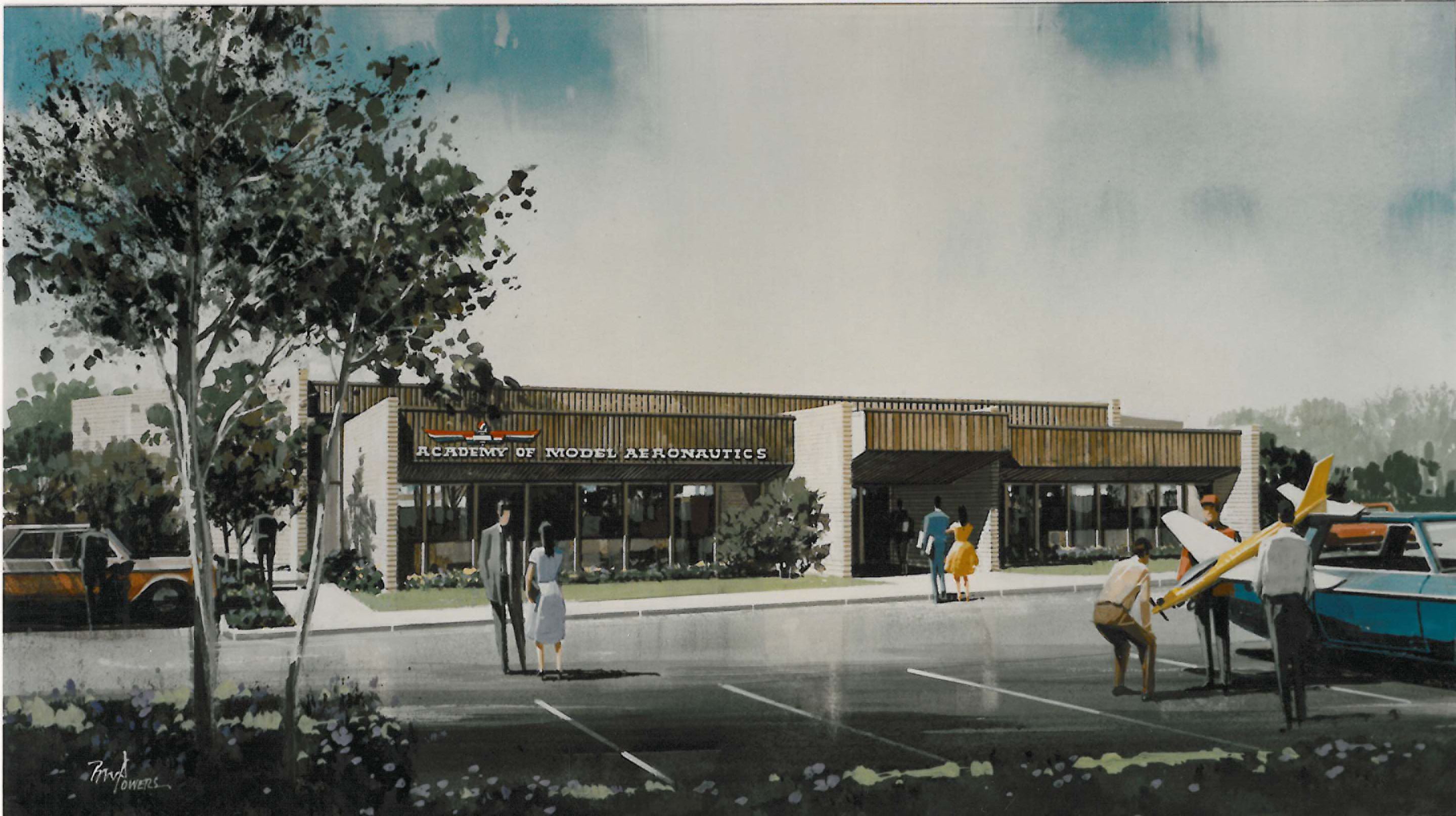
2. Reston, VA HQ building drawing, 1980s (Source #0001 AMA Collection)
3. 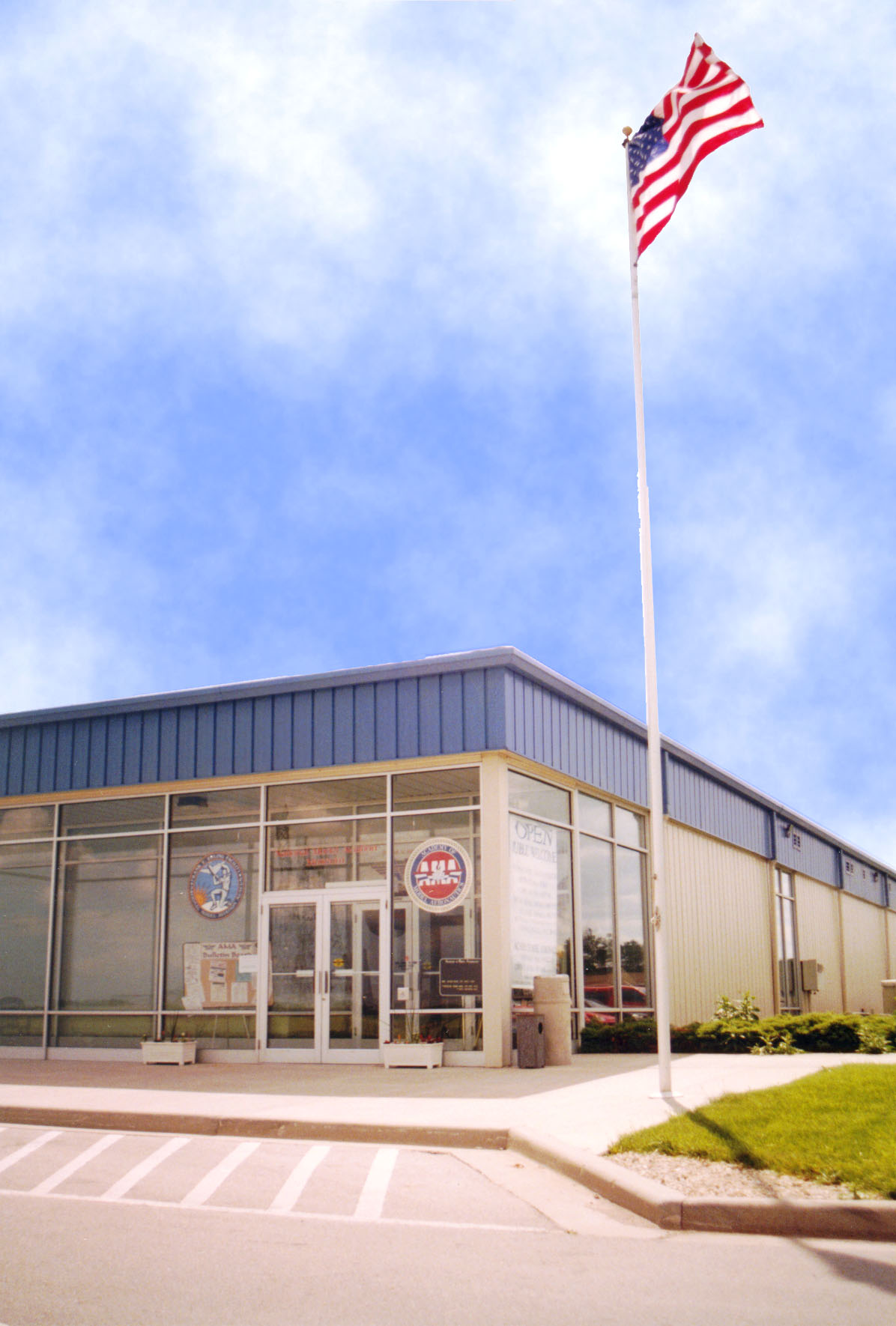
3. Museum Building, c.2006 (Source AMA staff)
4.
4.Museum Building with McCullough addition, c. 2010 (Source Museum Staff)
Week 1 – May 5, 2011 – Modeling Catalogs
Model Airplane supply catalogs have been around pretty much since the modeling craze started (over 100 years ago!) Much of the early days of modeling was spent scratch-building models or building from loose parts in kits. Building by hand is an art still around today, though much less due to rising interest in ARFs (Almost Ready to Fly).
To remember those fun days of yesteryear, here are a few of the early model company catalogs, from the 1920s-1940s.
1. 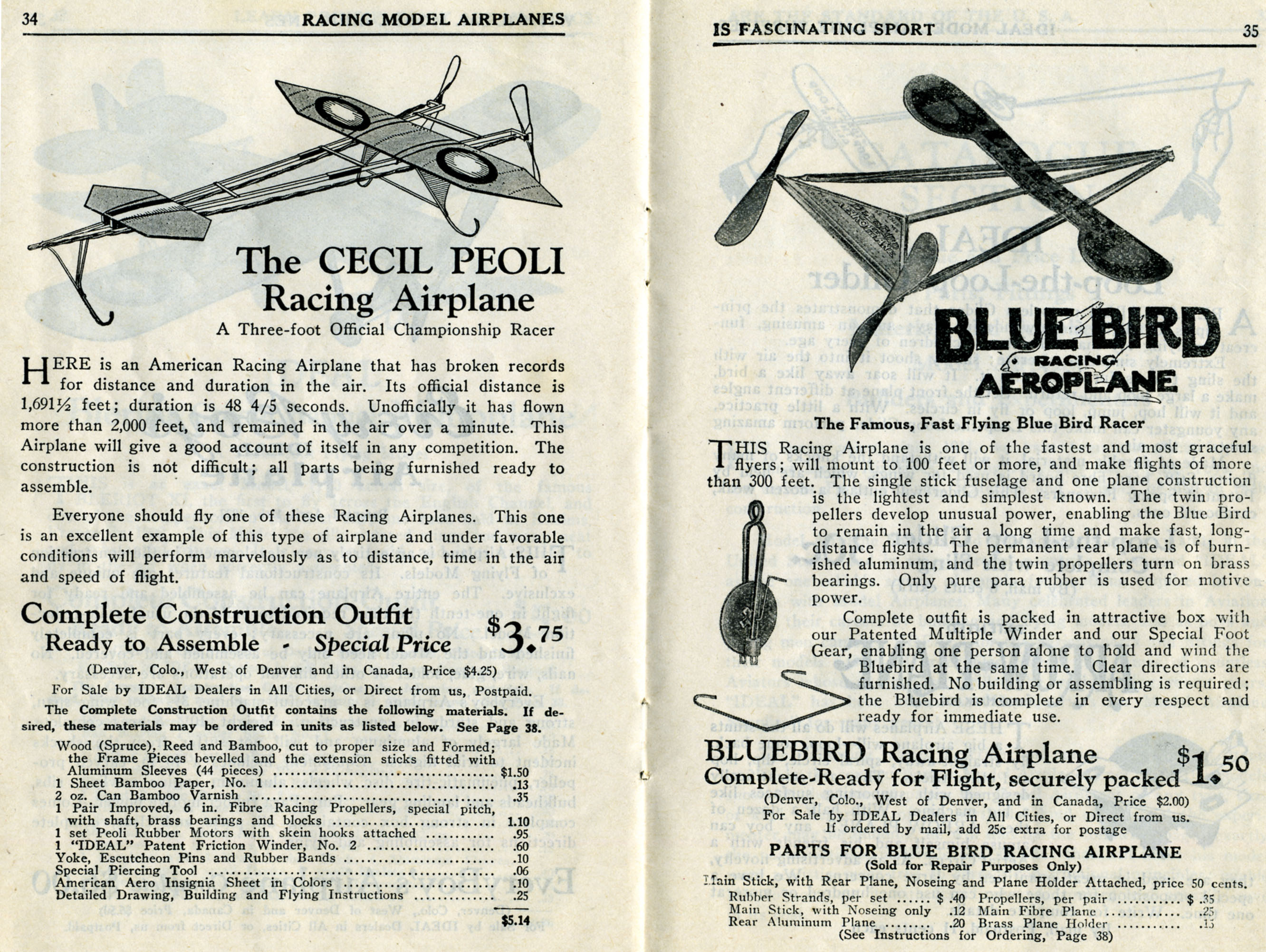
1. Catalog, How to Build and Fly Model Airplanes: Catalogue of Ideal Supplies for Model Airplane Builders, pages 34 and 34, 1928. (Source: National Model Aviation Museum Archives, Collection #0043)
2. 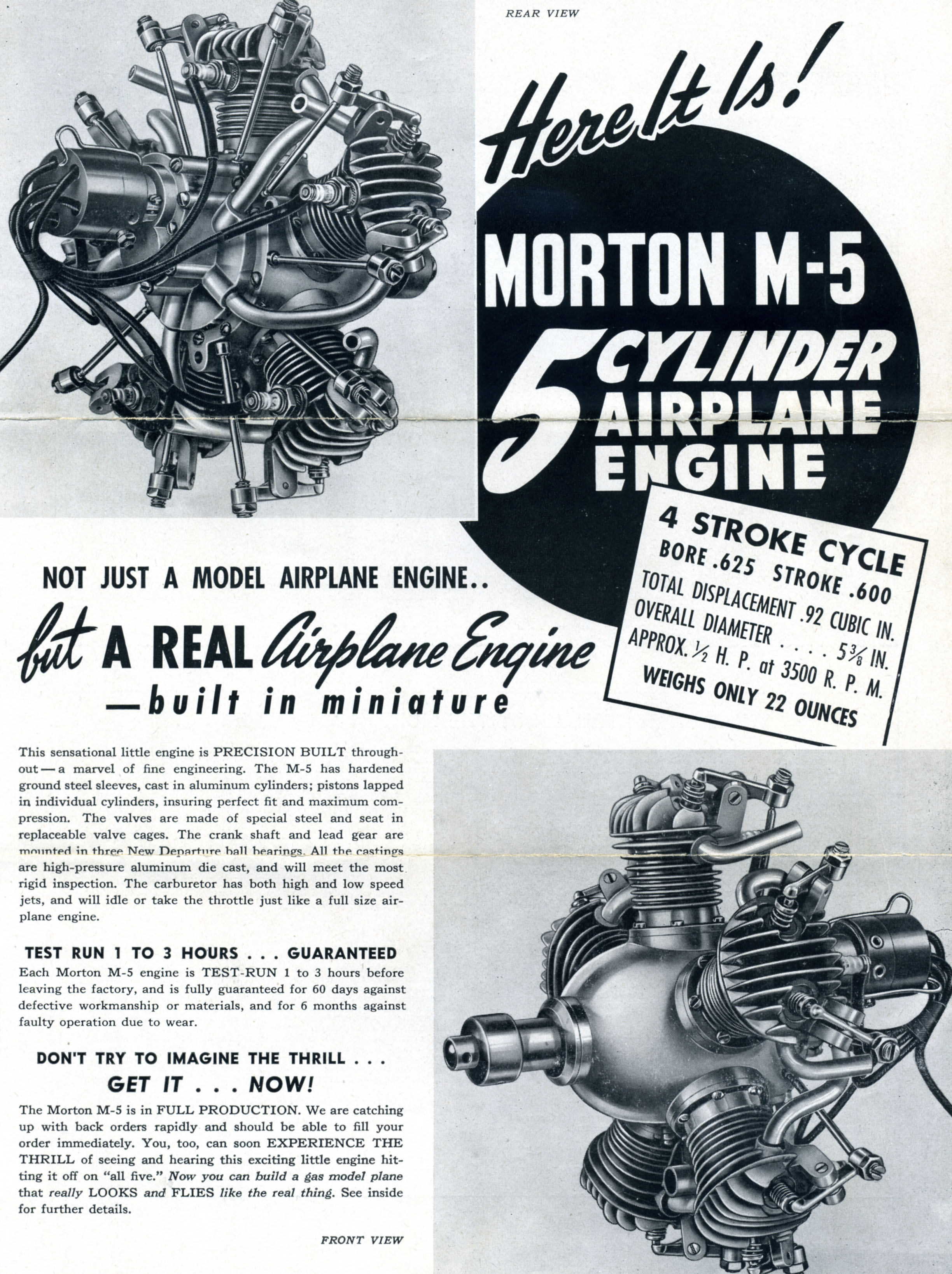 3.
3. 
2. Advertisement brochure, Morton Aircraft Corporation, c. 1945. (Source: National Model Aviation Museum Archives, Manufacturers and Companies Collection #0043)
3. Catalog, Model Aeroplanes and Supplies, 1914-1915. (Source: National Model Aviation Museum Archives, Michael Fulmer Collection #0158)
4. 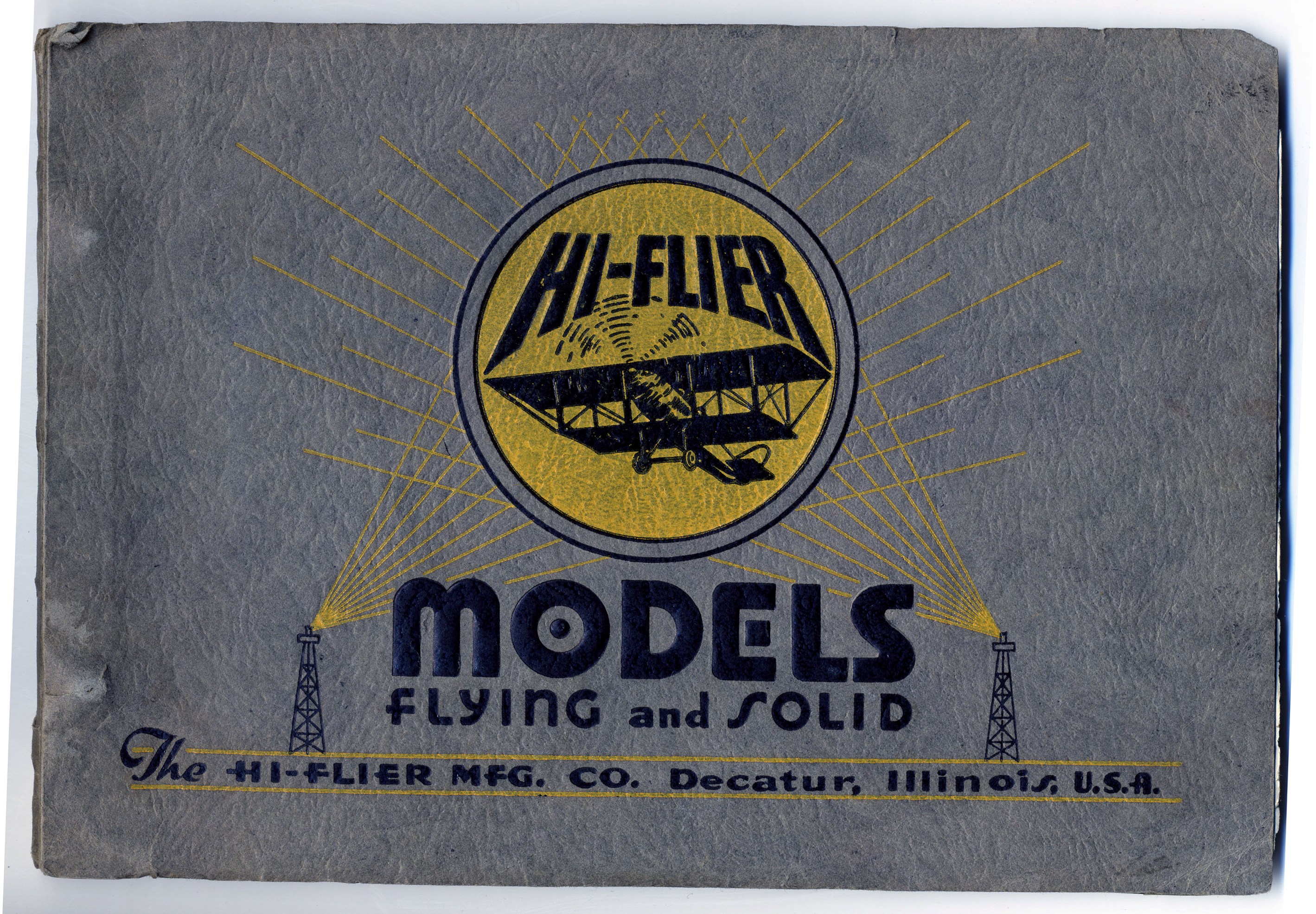 5.
5. 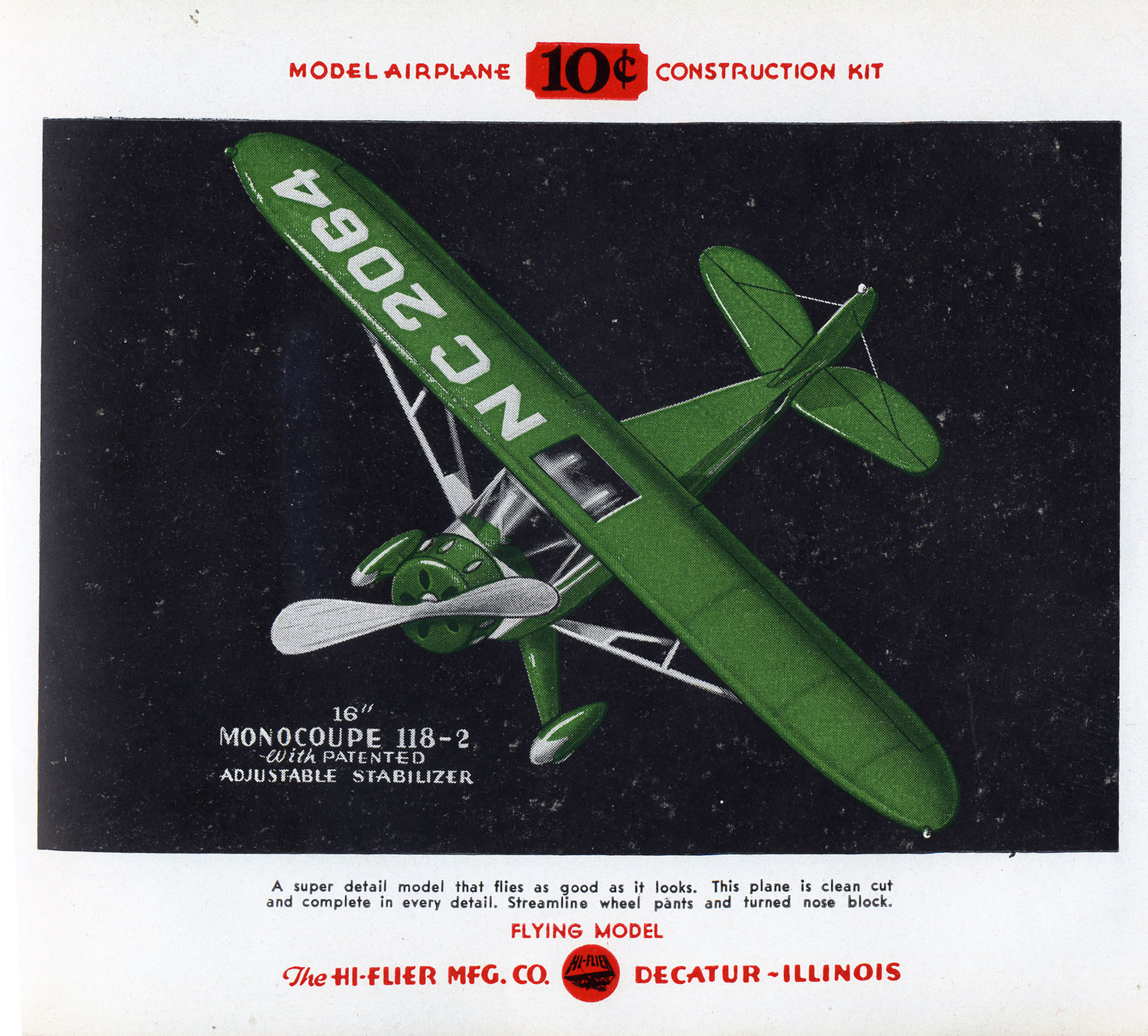
4 & 5.Catalog for hobby shop displays, front and inside page, Hi-Flier Manufacturing Company, c. 1930s-1940s. (Source: National Model Aviation Museum Archives, Manufacturers and Companies Collection #0043)
6. 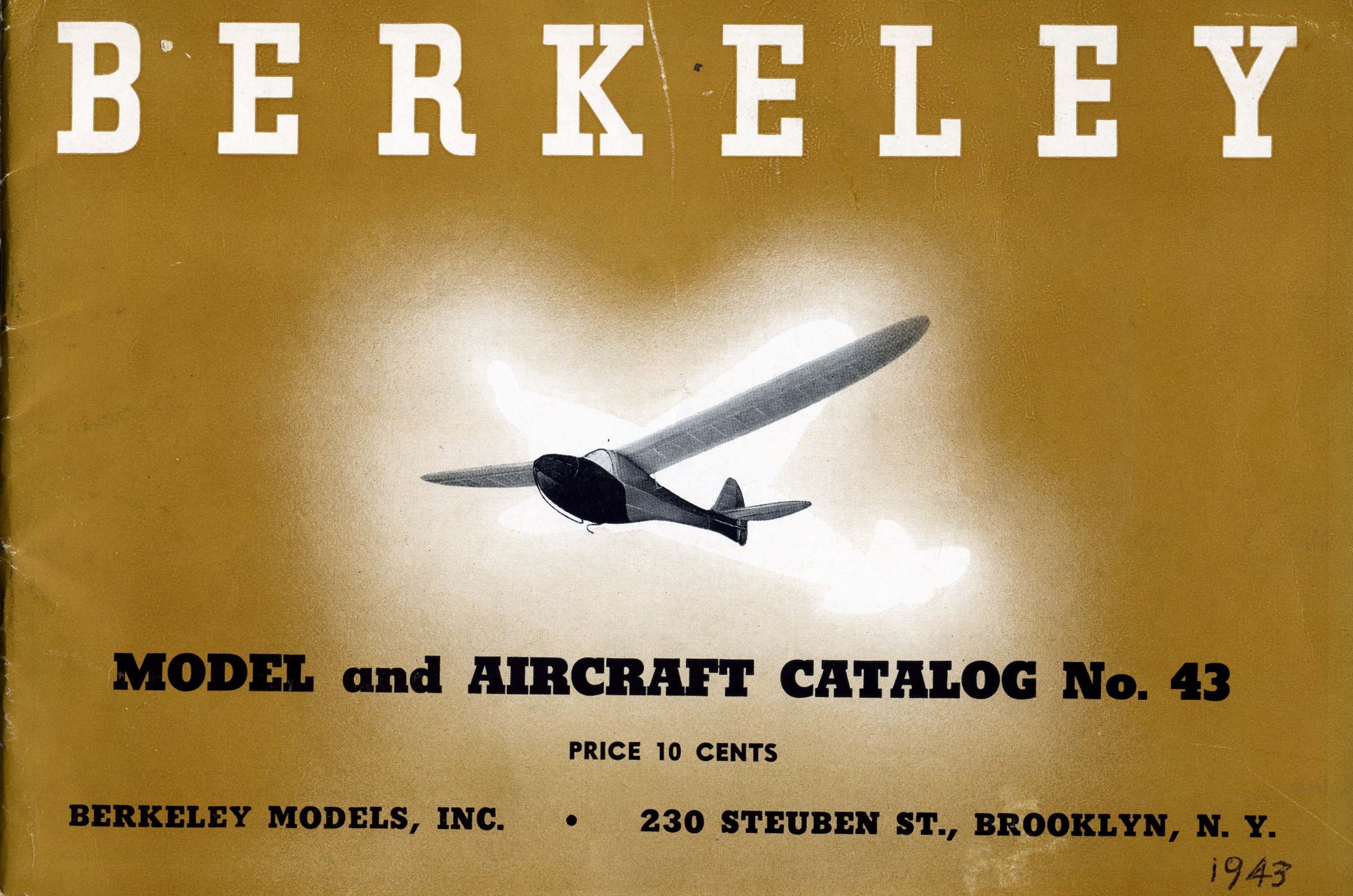 7.
7. 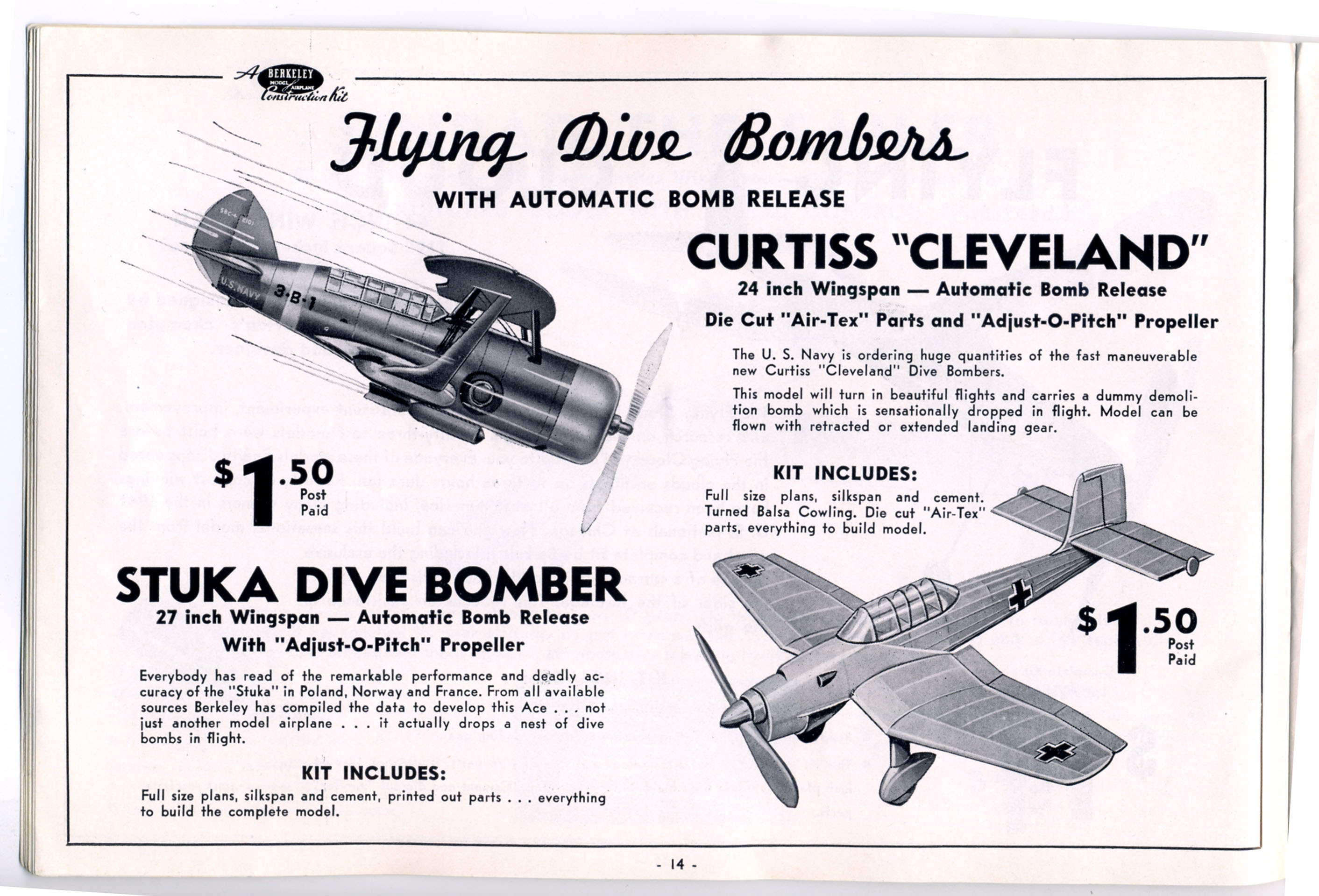
6 & 7. Catalog, Berkeley Models, Inc., 1943, front and page 14. (Source: National Model Aviation Museum Archives, Manufacturers and Companies Collection #0043)
8. 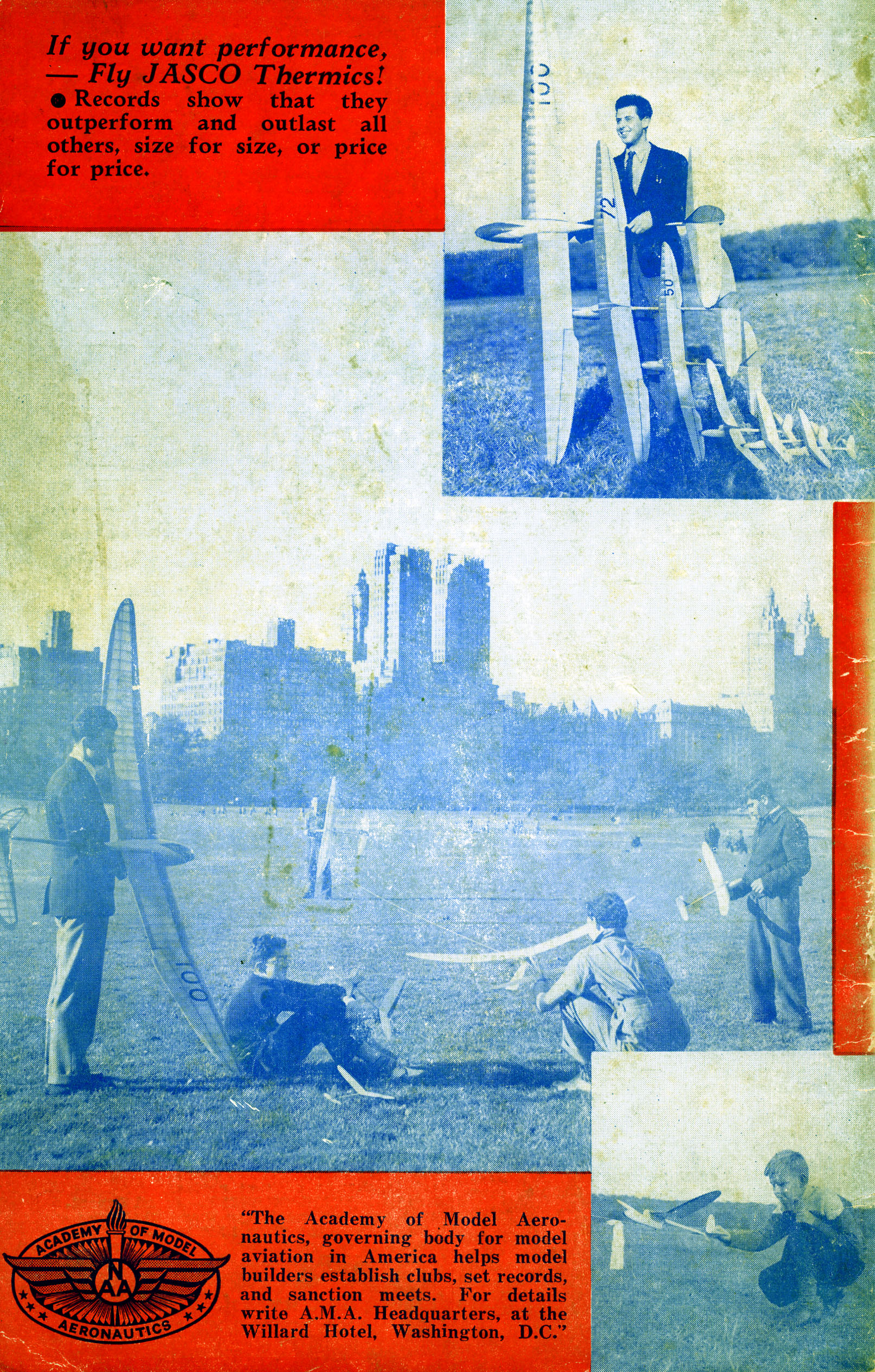 9.
9. 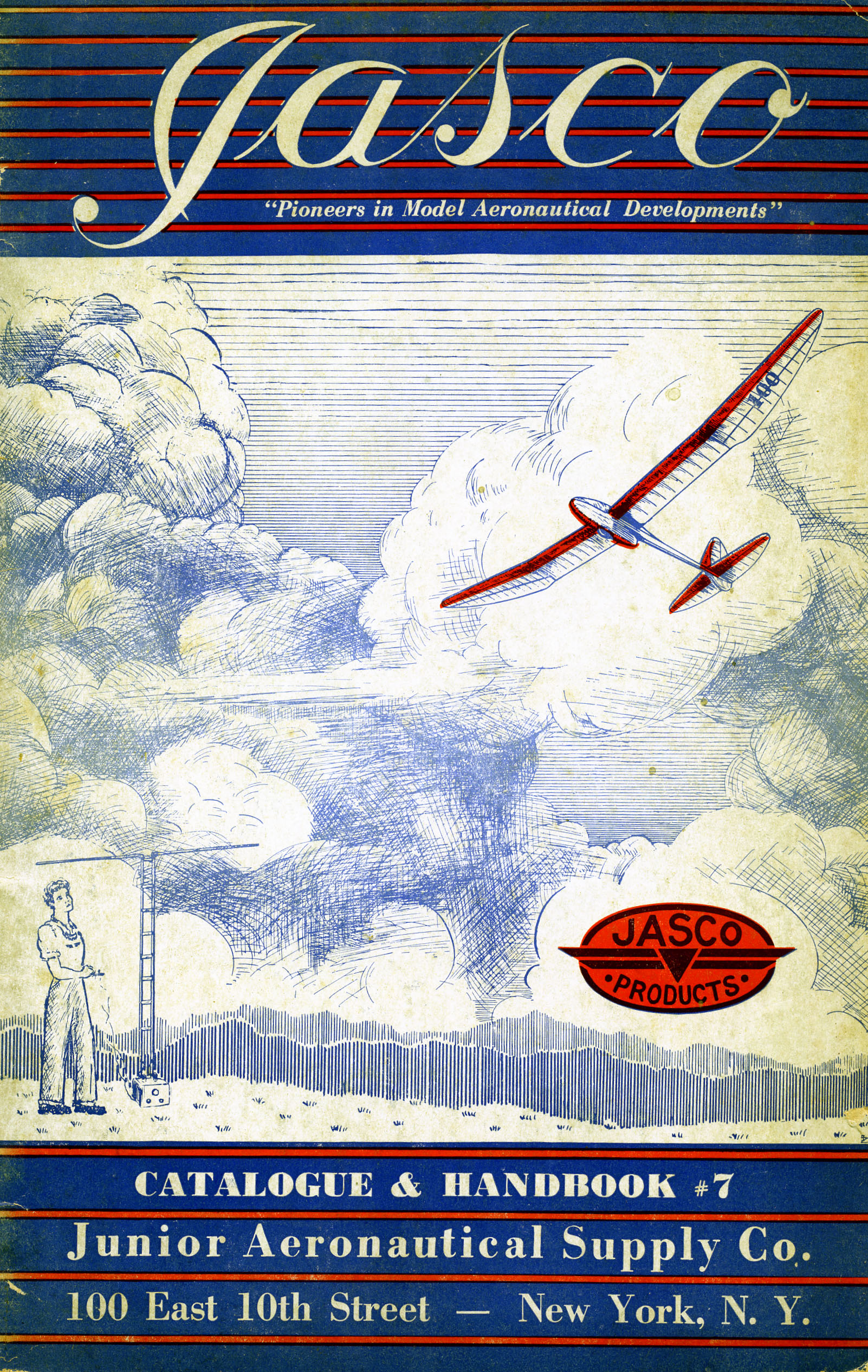
8. Catalog, JASCO, 1940 – back. (Source: National Model Aviation Museum Archives, Manufacturers and Companies Collection #0043)
9. Catalog, JASCO, 1940 – front. (Source: National Model Aviation Museum Archives, Manufacturers and Companies Collection #0043)
10. 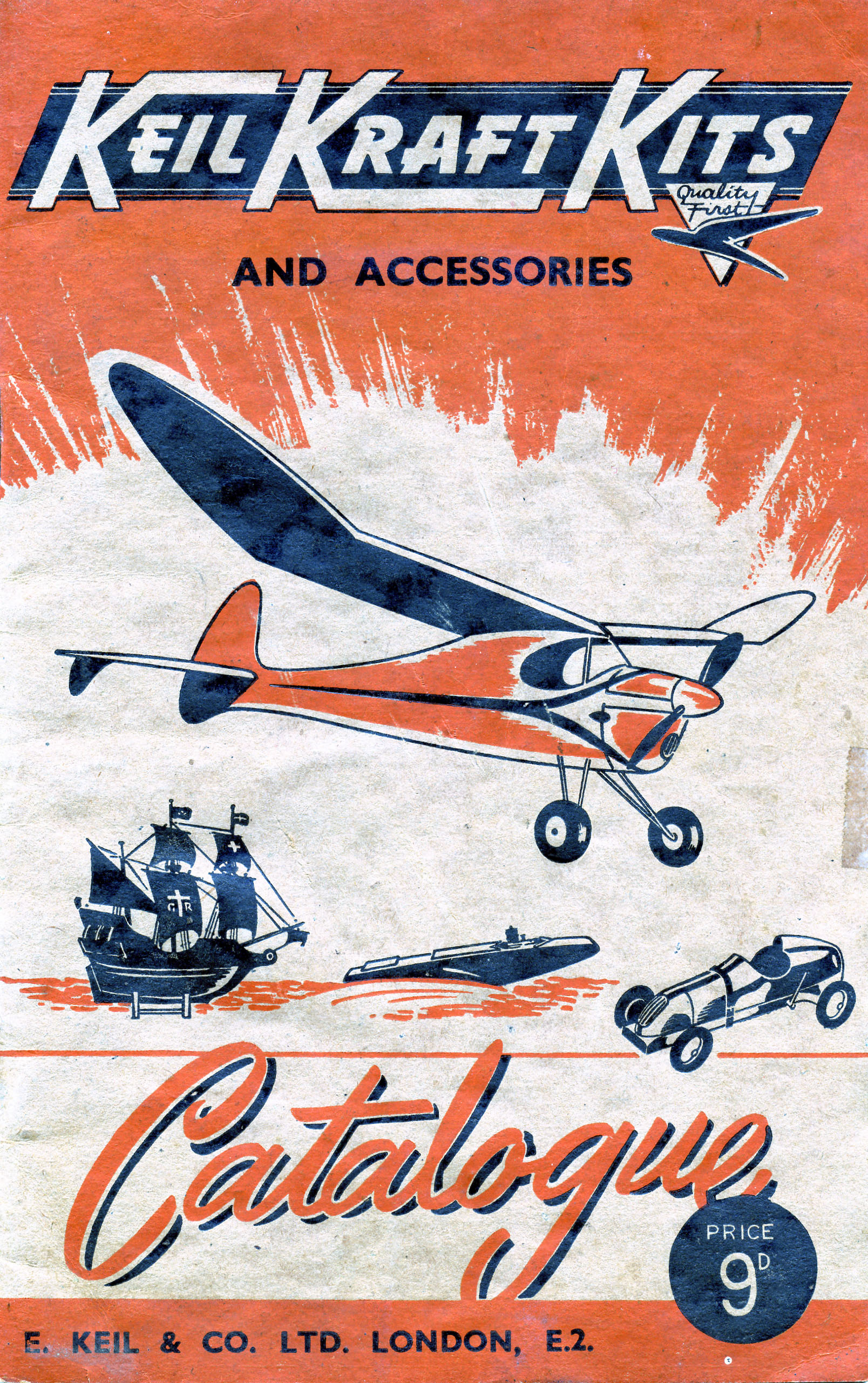 11.
11. 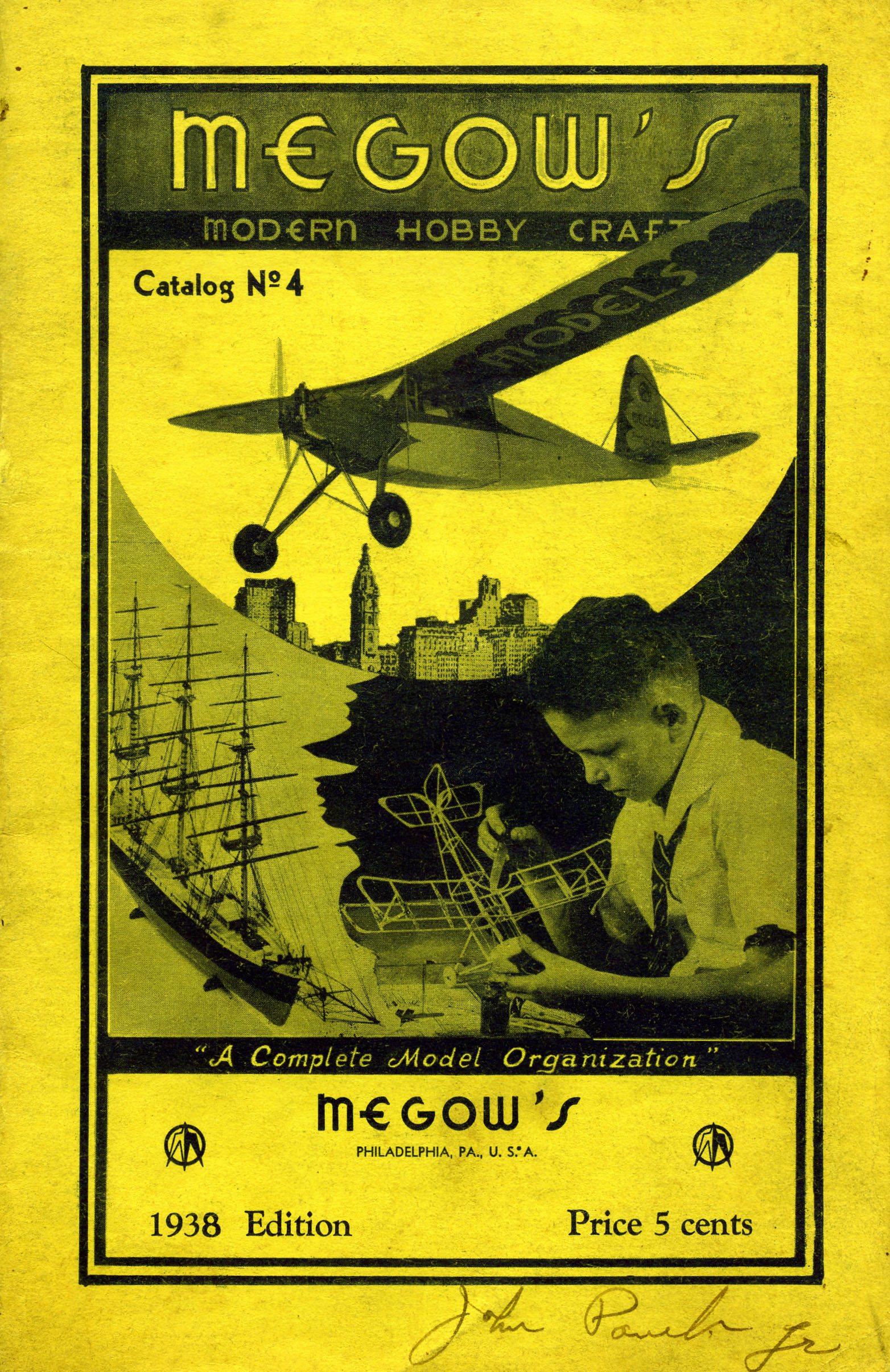
10. Catalog, Keil Kraft Kits and Accessories, E. Keil & Co. Ltd, 1948. (Source: National Model Aviation Museum Archives, Manufacturers and Companies Collection #0043)
11. Catalog, Megow’s Modern Hobby Craft, 1938. (Source: National Model Aviation Museum Archives, Manufacturers and Companies Collection #0043)
